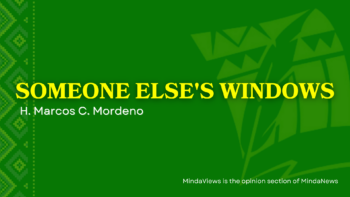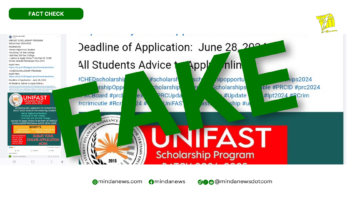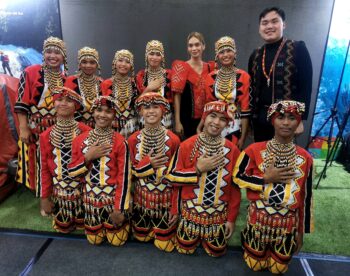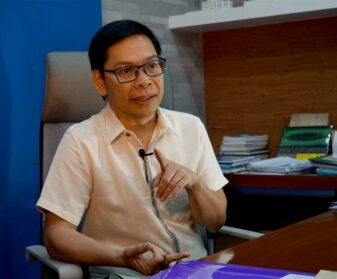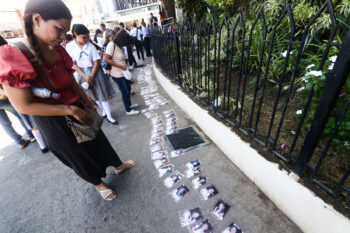2nd of five parts: Deconflictualization
08 Nov 2017
The relatively efficient handling of the government’s military operation against the MG-ASG forces and the associated non-military dimensions which projected the campaign specifically target the terrorist elements (i.e., not against Islam or the Muslims), and the sustained multisectoral relief operation efforts and other ameliorative initiatives by various agencies, organizations, and groups for the last five months truly helped in minimizing the sufferings and insecurities of the affected residents and families. But the stark reality is – the previously beautiful and dynamic “Islamic City of Marawi” is now physically ravaged, and its population is terribly pauperized and continues to suffer dismally (destroyed houses, lost properties, lost lives of relatives among collateral victims, lost livelihood, lost communal life, lost community facilities/services).
With the destruction and losses and continued sufferings, hardships and indignities in evacuation centers and in private and commercial dwellings in other cities, the growing disillusionment with the never-ending Mindanao peace process, and the perceptible spread of violent extremism and radicalism to the Muslim communities in Mindanao, Marawi City today is essentially a “powder keg” (i.e., a simmering social volcano of anger, tension, hatred and animosity spawned by the war and the underlying conflictual contextual issues or circumstances.) In addition, while many of the affected residents are generally blaming the MG-ASG for attacking Marawi City, some of them resented the government’s use of massive air strikes and heavy artillery fires which caused much of the destruction of their houses and properties. The expected retaliatory initiatives of the slain leaders and members is another conflictualizing factor. The expected eruption of violent feuds between families adversely affected by the war and the families of the leaders of the forces that attacked Marawi City is another incendiary factor. Hereunder are the suggested interventions that should be implemented now:
A.) The national government should give special focus and attention to the rehabilitation, reconstruction, and development of Marawi City and avoid diversionary or contradictory activities. It should strive to convey to the M’ranaw the strong commitment of President Duterte to build a better Marawi. It will be great if President Duterte can balance his frequent visits to the AFP units during the war with similar post-siege visits to IDPs in the evacuation centers outside Marawi City and to the barangays in the city where the residents have returned recently.
B.) Hasten the return of the IDPs to the barangays in Marawi City which are outside the main battle area (MBA), immediately after the required cleaning and clearing. These are the barangays which were not affected, or were minimally affected during the siege. This is an urgent prerequisite to quicken the rehabilitation, reconstruction and eventual recovery and development of Marawi City. This will help immensely in minimizing the sufferings and dislocations of families from barangays within the MBA. This recommendation is based on the M’ranaws’ maratabat (or sense of pride) and close family ties. In M’ranaw culture, seeing your close relative in an evacuation center or in a sordid situation is shameful to clan members. Allowing the immediate return of families outside the MBA would capacitate them to start focusing on their economic recovery efforts and possibly help their relatives and friends from barangays within the MBA. Housing accommodation problem for residents from barangays within the MBA will be minimized significantly. This recommendation aims to help reduce the shelter or housing accommodation problems for IDPs.
C.) Enlist the active participation of local government units (LGUs) and various sectors of Marawi City and Lanao del Sur in conducting the required rapid damage appraisal, needs identification and assessment, program planning, plan implementation, monitoring and evaluation. Aside from LGUs, the other sectors include the business leaders, the ulama (Islamic scholars/leaders), professionals, the sultans and other traditional leaders, women, youth, and the leaders or representatives of major civil society organization or NGOs.
D.) Address the fear of the residents regarding the status of their houses and lands located within the designated area of military reservation mandated in an order issued by the late President Elpidio Quirino in 1953 which lamentably ignored the prior or preexisting ownership rights of families who have been continually occupying the same lands for several generations, even before Philippine independence. This is a classic example of the historical injustices against the Bangsamoro that President Duterte committed to correct in many of his speeches during and after the election campaign period. Initiating the release of the lands within the military reservation to rightful owners will be a high-impact political move for Pres. Duterte, especially during this turbulent post-siege period.
E.) Implement measures or activities to help heal the wounds of the war. The physical cleaning and clearing of Marawi City, particularly the main battle area (MBA), must be completed as early as possible. Along this line, the suggestion to make it as a war museum is not in order because it will institutionalize and perpetuate the wounds and pains of the war in the minds of M’ranaws.
F.) Fast track the construction of transitional shelters and their award to deserving IDPs from barangays within the MBA and those from outside it whose houses were destroyed. Validation of data for applicants or recommendees for award of transitional shelter is necessary, considering that a big number of the reported more than 400,000 IDPs are residents of some of the municipalities in Lanao del Sur who were not actually affected by the siege but who feared the possible spread or spillover of the violent clashes to their respective communities.
G.) Establish a strong multisectoral support group for community healing, which shall consist of LGU leaders, ulama, officials of field offices of national departments, traditional leaders, the academe, AFP and PNP officials, business leaders, professionals, women, youth and civil society organizations. This group shall develop and implement interventions to gradually eliminate the issues that undergird violent extremism and radicalism. The group shall spearhead efforts in reaching out to suspected vulnerable individuals or groups to win them from their extremist or radical views or activities.
H.) Sustain existing efforts of the AFP and PNP in pursuing complaints of affected residents or concerned citizens regarding alleged violation of human rights, looting, harassment, discourteous behaviors, and other offenses or infractions during the five-month siege. The AFP and PNP should take appropriate administrative and legal actions on reported violations. The swift actions of the AFP on complaints during the early part of the siege was received favorably by the M’ranaws. This is important in keeping the good image projected by the AFP and PNP in handling the war in Marawi, which is deemed by many to be substantially different from the image of the Martial Law soldiers during the Marcos regime.
I.) Prioritize the construction or reconstruction of destroyed mosques (e.g., Sultan Bato Ali Mosque and the Islamic Center), madaris (madrasah schools), and torils (live-in Islamic schools). Initial preconstruction works like the preparation of architectural design and detailed planning should be done as early as possible. The construction or reconstruction of the said structures may be funded by the government, or by foreign or domestic donors. Adequate consultation with concerned local sectors (barangay, city, ulama and traditional leaders). This program component is necessary to address some controversial religious issues related to the military operation in Marawi City. Mosques, madaris, and torils are symbolically important items for confidence building and deconflictualization purposes, considering the fact that the cause of the said extremist groups is anchored largely on religious issues. Related to this, it was reported that many of the fighters who attacked Marawi were graduates or students of Islamic schools and madaris.
(MindaViews is the opinion section of MindaNews. Dr. Macapado Muslim, University Professor and former president of the Mindanao State University, submitted this policy paper to President Rodrigo Roa Duterte on November 6, 2017. The author says this is a product of a long-running analysis of the Moro armed struggle in Mindanao and an offshoot of the book The Moro Armed Struggle in the Philippines: The Nonviolent Autonomy Alternativ
The author obtained his Ph.D. and M.A. in Political Science degrees from the University of Hawaii where he wrote a dissertation on the Moro armed struggle. He specializes on governance and peacebuilding in multiethnic countries)
TOMORROW: Economic Rehabiliation


